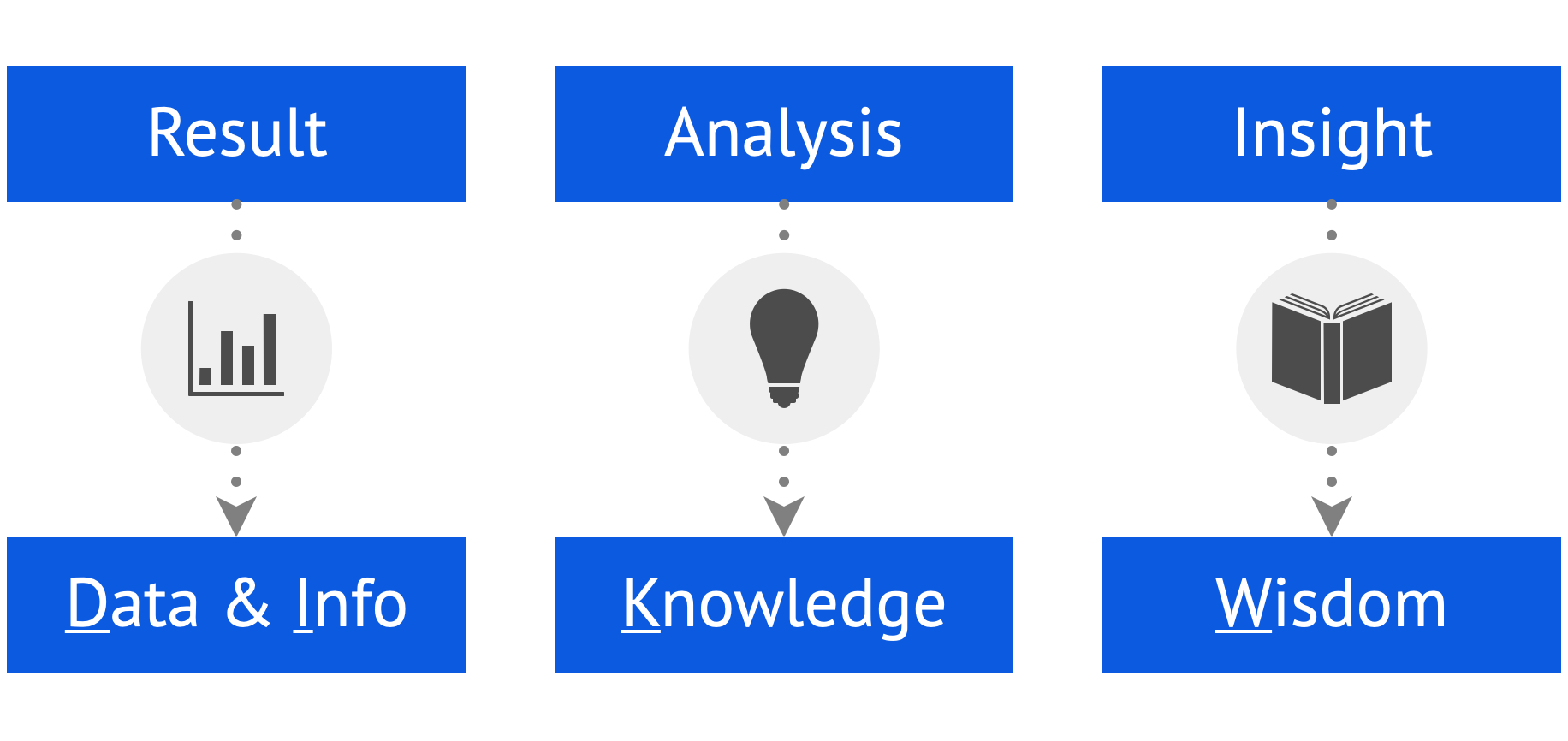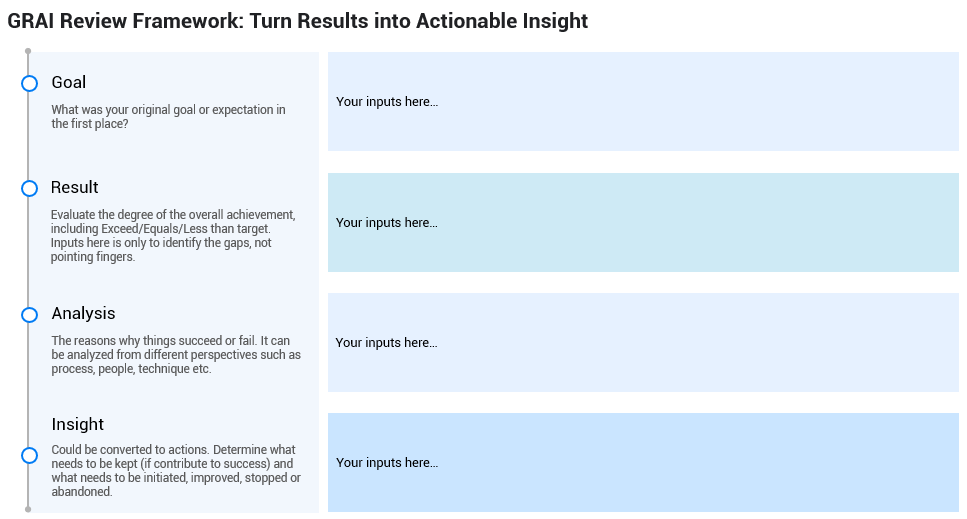A four step review model that walks through Goals, Results, Analysis, and Insights.
Overview
GRAI review framework stands for Goal – Result – Analysis – Insight.
This assessment framework focuses on identifying the deviations between goals and actual results, while pinpointing the key factors that led to those outcomes.
GRAI Review Breakdown
Goal
This refers to the original goal or expectation you set—whether for the year, a specific period, or a project.
It's essential to clearly define the target from the start.
Result
Here, you evaluate how close you came to achieving your goal, whether you exceeded, met, or fell short of the target.
The key is to identify gaps between the goal and result, without assigning blame.
Analysis
This is where you explore the reasons behind success or failure.
You can analyze from various perspectives like process, people, or techniques (using frameworks like MECE or the Pyramid Principle).
The more perspectives and data you explore, the more likely you are to uncover deeper issues. The insights from this analysis will inform your next steps.
Insight
This final stage involves identifying patterns from your analysis.
It’s the most critical part of the GRAI review. Based on your findings, you'll determine what actions to keep (if they contributed to success) and what should be initiated, improved, stopped, or abandoned (if they contributed to failure).
Connecting GRAI to the DIKW Model
Result-Analysis-Insight in this model can be interpreted to another model (DIKW Model).

- Result provides Data (D) and Information (I).
- Through Analysis, you gain Knowledge (K).
- Finally, Insight gives you the Wisdom (W) needed to make informed decisions.
Template for Practice
Get into the real practice and start reviewing now.






